In speaking with people having a wide variety of approaches to dog training, it’s been interesting to note which ones were the more open-minded, and which seemed to know the most about their own approach and methods. Regarding the tools they use, most tend to justify them simply because they work, and the more intrusive and varied the tools, the less they seemed to really know about them.
We won’t discuss the possible impacts of very aversive tools, other than to note that with them you are then training the reaction to a physical restraint or avoiding an aversive. Something which is quite different from learning a behavior which the dog then decides to use. Still, once the behavior becomes habituated, many people no longer care about that distinction.
Restraint and Coercion Tools
The Shock People

From extended distances and multiple-channels, to various flavors of shock, vibration, noise, and maybe more. Some newer ones reduce the shocks to a low level, but may require trainers who may know a bit more.
The (very few) knowledgeable shock collar people often started a bit defensive, but were then very willing to speak objectively and the trade-offs in their approach. Some of them only use it occasionally, or in progressively more difficult training scenarios. Some of those were either at a considerable distance, or those that required precise timing during a very forceful or energetic activity by the dog.
However, most people simply insisted that it works and doesn’t hurt the dog. And, that’s about all that they really knew. At one such training session I saw five dogs walking around like zombies, afraid to react to my nearby dogs. As with many other tools, often the greatest difference is between gaining some control to teach, or physical coercion and punishment. Few of the users appear to know that difference.
Ultrasonic Tools
They have cheap electronics, don’t cause any pain, and are often unfamiliar to people. So, why not present them as wonder tools? Enter, now, the BarxBuddy!
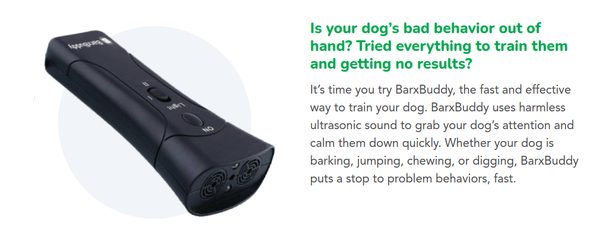

Notice how they resolve nearly all possible problems, just by getting your dog’s attention? All similar to things like special harnesses, except more versatile thanks to the wonder of electronics. Now, I actually did use a similar one some years ago. It didn’t do anything at all by itself but just think of it as a whistle that people won’t hear. With a bunch of people in the dog park having their dogs causing a raucous some distance away, they ended up shouting at them. Once mine were trained to this whistle, the people-silent button got their attention instead.
I was also curious as to how the several dozen other dogs there would react to the ultrasound. The answer was, really not much at all. A few initially stopped and listened to see what was happening, then ignored it. Out of dozens of dogs, I did find only one single dog who was simply very afraid of it. For all the others, it was no different than a whistle. On stopping a dog from barking, I’ve only seen a few where this worked.
Prong Collars
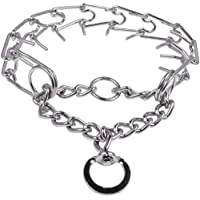
The prong collar people usually insist that their dog only walks well with a prong collar, and he does fine and is happy with it. The problem is that they cannot transition the dog to a regular collar unless they also change how they walk the dog, and most have no wish to do that.
When working with some of those dogs who were very used to the prongs, I’ve had to start them with both a prong and flat collar. That allows me to gradually transition over a week or so, and the prongs are then no longer needed.
The Head Halter People

Then we have the head halter, which does a great job of either keeping the dog’s attention, or focusing him on figuring out how to escape this thing. It does seem to serve the purpose of the trainer having to do less yelling, as most dogs will go wherever you point their nose.
While nearly all dogs will initially hate this, many will eventually tolerate it. Since it controls the head, they can’t pull as easily. A large animal shelter I was at decided to test these, finding that most dogs acclimated and became easier to leash walk. However, that only applied while the halter was on, and did not carry over to any other type of collar. Simply a reaction to this specific type of restraint, as I also noted about the prong collars.
The Harness People
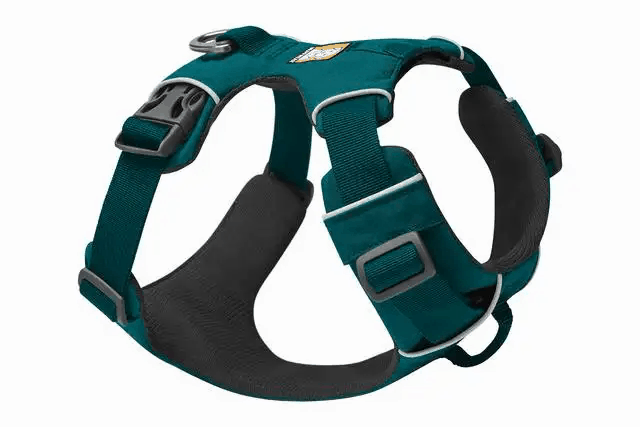
The front-loading harness, as perhaps it’s easier to drag your dog from the front than the side? Instead of explaining to him what you want, this physical coercion is much faster.
About the only benefit I’ve seen is that it makes a few people feel like they are now in control. This also has several other variations, including special leashes which hook to multiple locations at one time, but they all follow the same theme.
The Flat Collar People

Finally, the simple strap collar. Giving you somewhere to attach the leash, signaling the dog when and where to go, and preventing the guy from running away from you. Like all the others, it also does a good job of letting the dog signal you, but he can now do that with far less discomfort. It also gives a place to hang tags and prevents him from going out in the world naked.
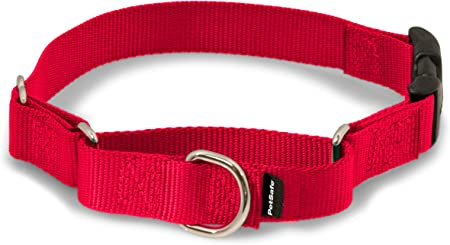
Or a Martingale version, which will be a looser fit, with limited tightening if the dog pulls. These are often the collars I use.
Leashes, and Leashes
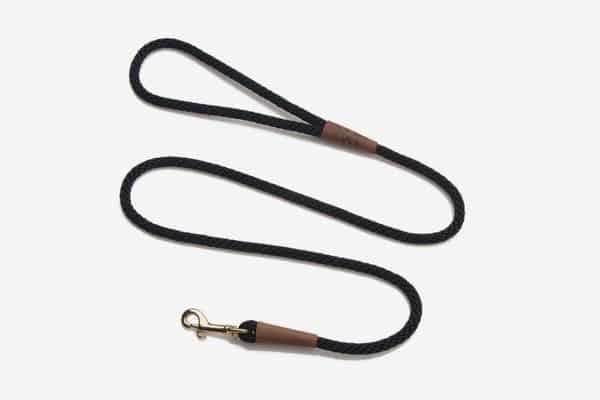
A
Leash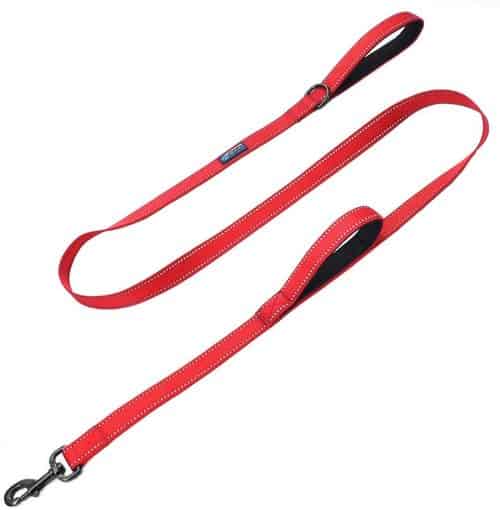
Double Leash 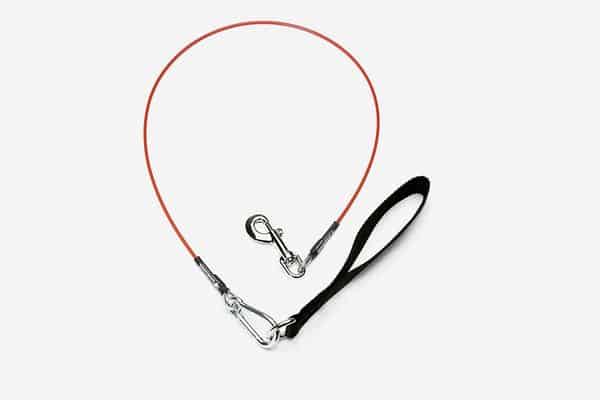
Indestructible 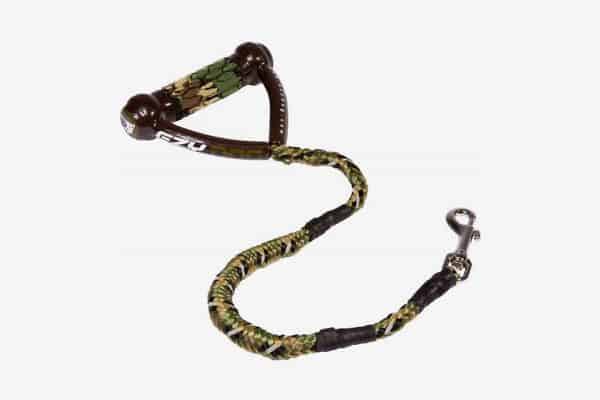
Shock Absorbing 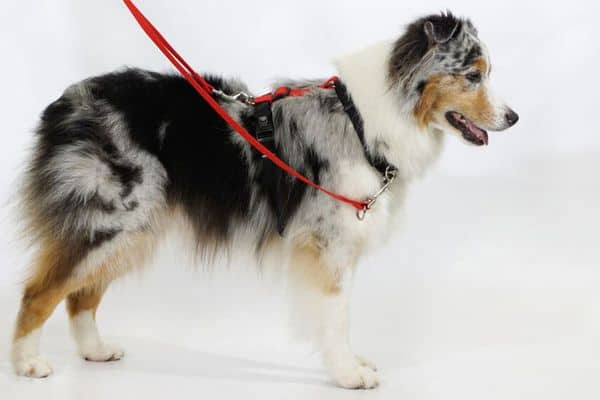
Multi-Function
So many to choose from! The Double allows you to keep him closer when crossing the street, but so does holding a regular leash closer. The Indestructible could hold over 600 pounds (!), while the Ordinary one can only manage about half of that. Shock Absorbing allows you to ignore a dog who walks like a ping-pong ball, if that’s your favorite game. And the Multi-Function tries to be both a leash and a harness.
As to flat versus round, if the dog runs and the leash starts to slip, the flat ones are far more likely to cause a friction burn.
Yes, it’s true that some dogs will be used to pulling and tugging very hard because that’s what’s worked for them in the past. I’ve seen some of them at shelters, where volunteers surely didn’t help the situation. You need to keep the dog under some control and manageable, without hurting themselves (or you), and in a manner that can easily be transitioned to an ordinary leash once they start to learn. This is even more important if the dog is lunging hard, which can cause a neck injury.
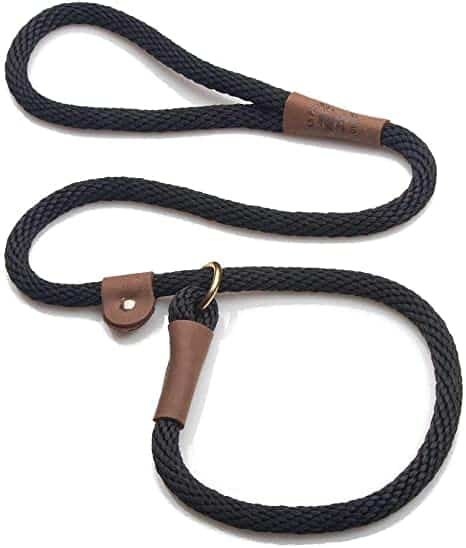
To avoid fitting and maintaining collars, most shelters use slip-leads for leashes, which are very convenient and secure if used correctly. With lunging dogs, some places will also do a belly-wrap with the leash. However, that can cause considerable compression of the soft belly.
Over the years, I’ve only found one good solution to hard lunging, which has never been needed more than the first few weeks, and is shown next.
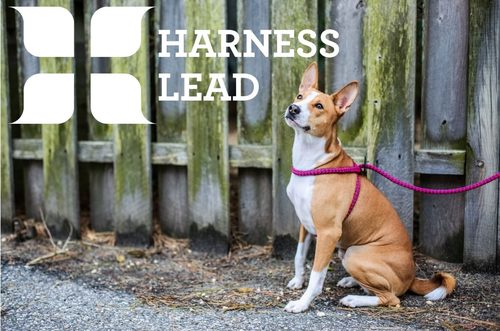
The Harness Lead is designed for both the neck and chest, stopping the dog without too much neck pressure, and no soft belly compression as it’s around the chest. As a modified slip-lead, no collar is needed, but can still be on the dog. And once the dog is responding, the Harness Lead can be easily reduced to a simple slip-lead to continue the training, so you only need to carry one leash.
And for handling shelter dogs in kennels, it can start as a simple slip-lead just to get a wild dog out of a kennel, then easily converted to a Harness-Lead for walking. This is very useful, as many shelter dogs simple cannot be taught to stop lunging, due to the wide variety of ways they are walked by volunteers.
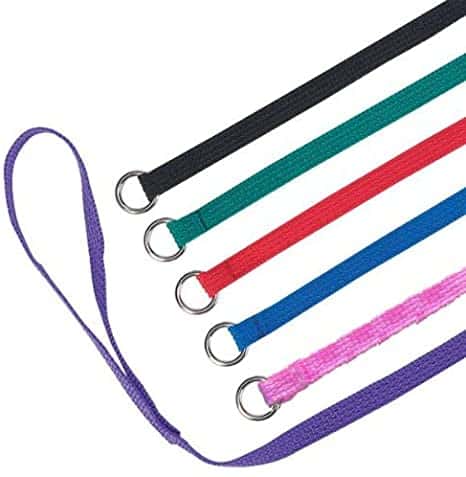
The last type is a Kennel Lead. These are very inexpensive slip leads used by some shelters, kennels, and many veterinarians. They are only designed for very limited use, and are only secure if you maintain some tension on it. As such, they are not designed for use during any type of training. I recall an event allowing the newly adopted dogs to leave using these. One dog got out and was gone before leaving the parking lot, as nobody told the people what precautions to use with that leash.
Dog Walking Tools
The Worst Dog Walking Tool
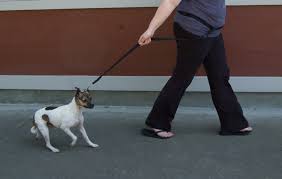
Seriously, leave this person back at home. If that dog didn’t pull before, he has to do so now, just to stay on his feet.
It often takes people weeks to learn how to stop doing this, and some never make it that far.
The Most Versatile Dog Walking Tools
Sure, some of the items above are useful at times, but only when used with the next two items. And the better you use them, the less you may need other tools. However, these are the both the most versatile and most difficult to use.

The first task is in learning how to stop pulling the dog. This often takes about two weeks.
Then, how to guide the dog in reacting when he just starts to pull. You need to learn how to tell him what you want. That takes another two weeks.
Finally, there’s the dog learning you, which is only five days or less. Once you learn to speak clearly and consistently, this usually goes pretty quickly.

Next, we have to sync these legs with the arms above. Remember that this is the dog’s walk, and they love to stop and sniff bushes. Most dogs will wait for you to do any looking (or sniffing) and expect the same in return.
Remember, if either one of you is constantly pulling the other one, they will get pulled back and nobody wins.
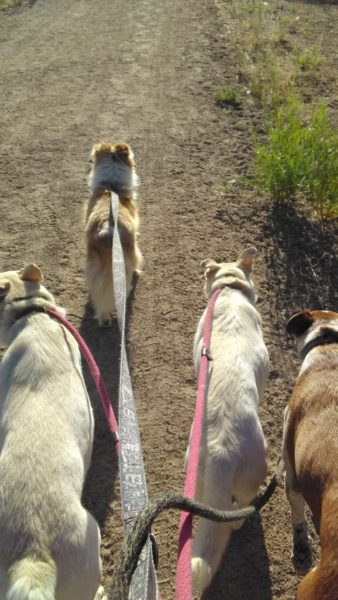
While walking four dogs in the woods, one of them froze in an alert position with his head up, catching a scent. It must have been pretty interesting, as the four of us stopped and waited for over a minute until he was ready to go on. For more detail, see leash training.
Impulse Control and Reactivity
The Fence
When a dog starts with very high reactivity to other dogs, it’s often not difficult to take that down a few notches. But sometimes it still remains too high to move to some simple meetings with new dogs. That’s where the proper use of a fence sometimes comes into play, so they can get used to other dogs running and playing near them. And a few will even relax enough to start participating, but, while allowing some sniffs, the fence keeps them all safe. All while giving you the opportunity to start teaching commands to verbally control their excited behavior.
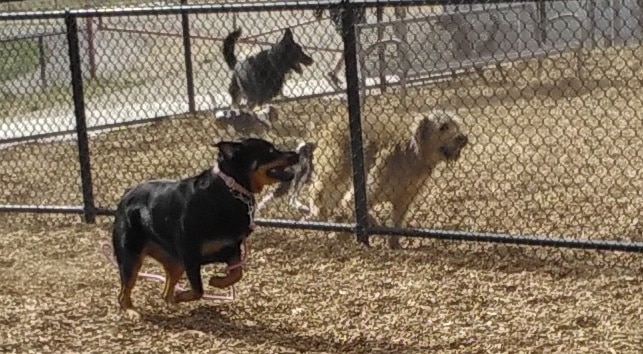
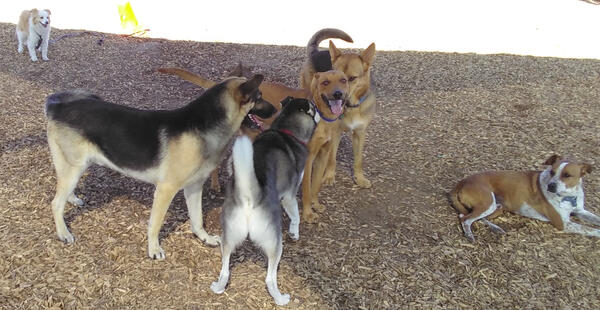
The GSD on the left, Duke, couldn’t even be walked in sight of other dogs. But after time behind the fence with one dog he calmed down enough to start learning how to meet them on his own.
The Fast and Wild Toys
While some dogs do fine with thrown balls or frisbees, others just ignore them. To develop some impulse control when the dog is very excited you need to establish that excitement under controlled conditions.
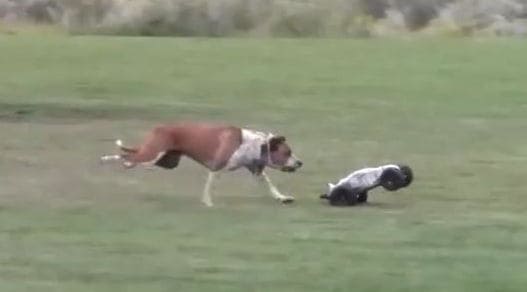
For a dog who loves chasing rabbits and lure coursing, a fast RC Car gives plenty of exercise. While also giving the opportunity to learn to wait, stop, and return on command.
Using Behavior, or Coercion?
When the restraint tools work, very often you will hear that the dog walks just fine with the ____, but always pulls badly without it. And, yes, that’s exactly what they trained him to do! Alternately, my dogs all respond to a gentle leash jiggle or only a soft word, with that often working even if not on a leash. And you may often see me leash walking three dogs with only one hand.
While most dogs are quite adaptable and forgiving, it’s also possible they may prefer some of these choices over others. But, often the dogs just don’t get a vote.
